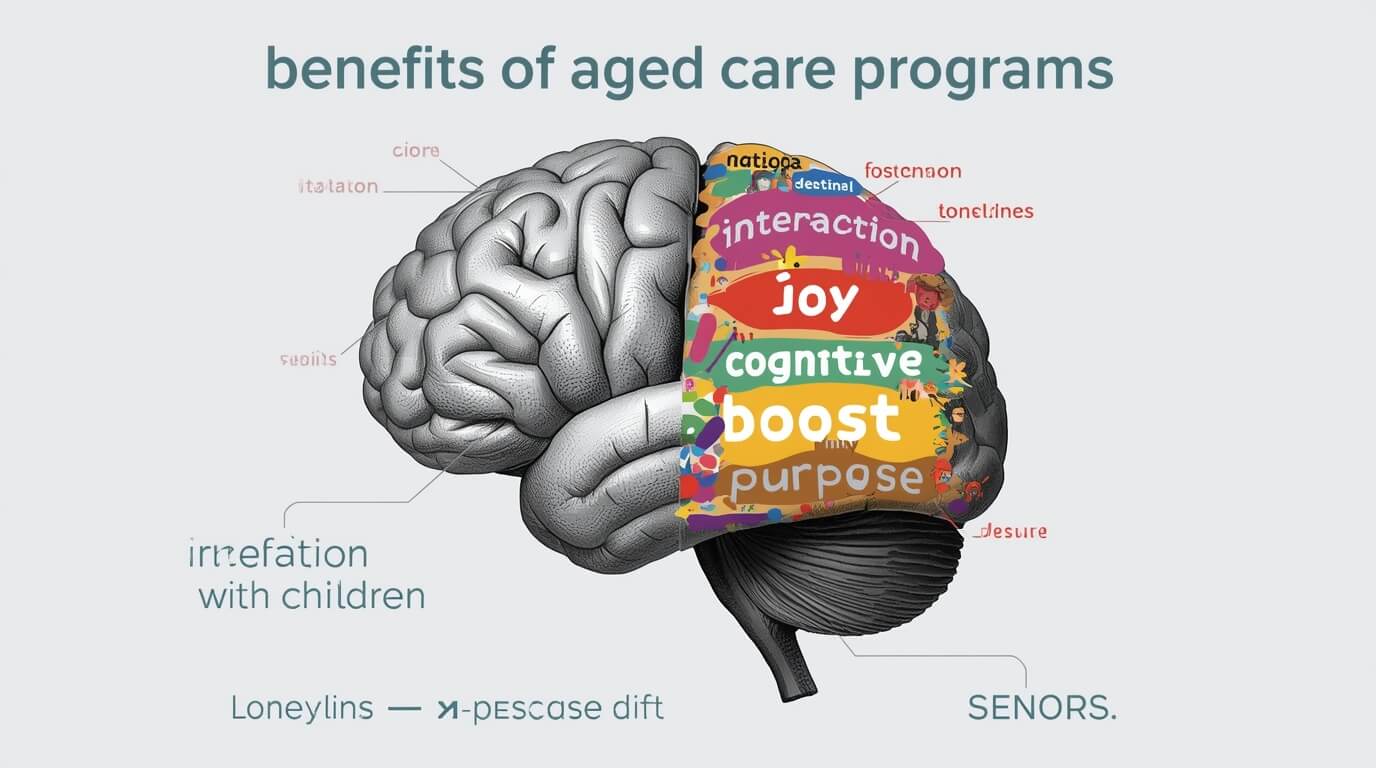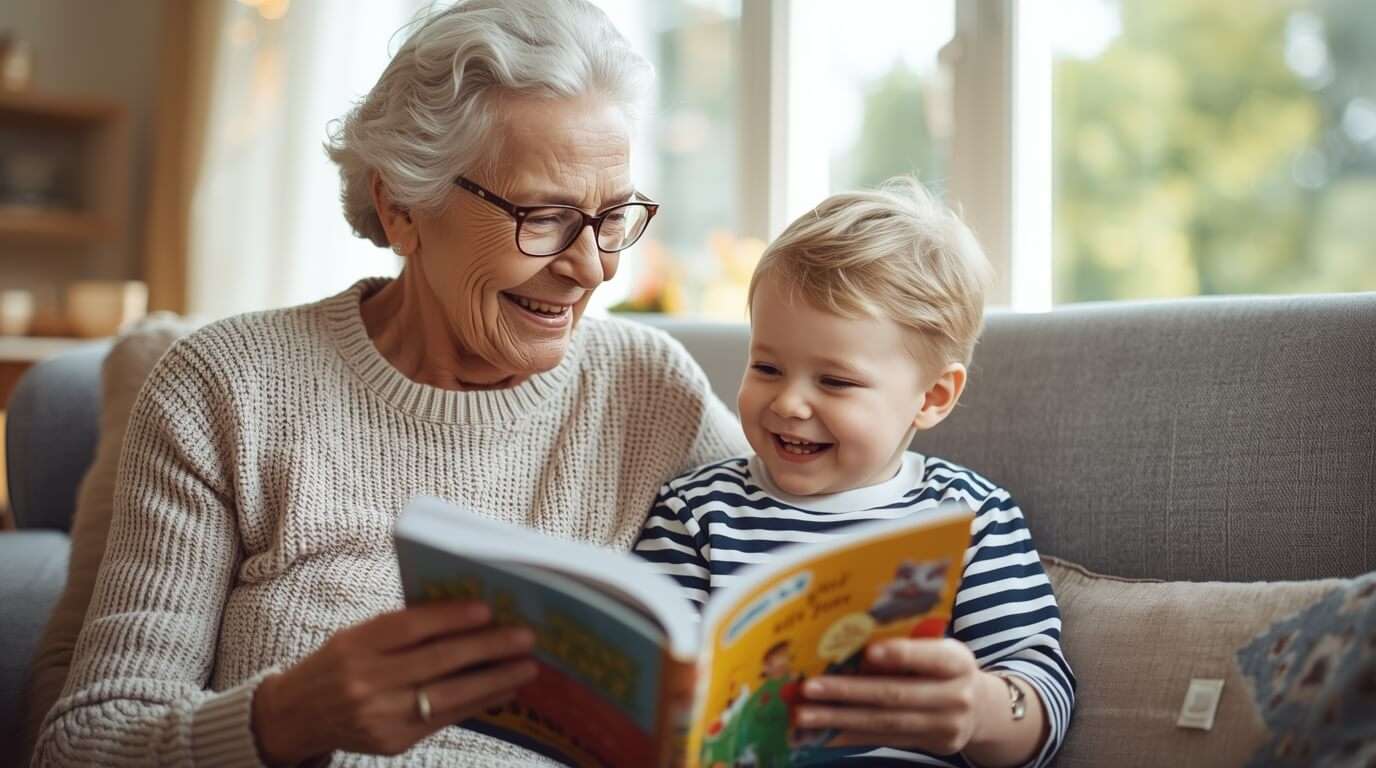Discover how these magical 'grand-friend' programs are fighting loneliness, boosting development, and building communities that truly care.
Picture this: a room filled not with silence, but with the sound of a toddler’s giggle echoing alongside a gentle, wrinkled smile. An unsteady, small hand passes a crayon to a hand that has seen a lifetime of change. This isn't a fairy tale; it's the beautiful reality of a growing movement that places childcare centers right inside aged care facilities.
At Care and Prayer, we believe in nurturing connections that span generations. Loneliness and social isolation are silent epidemics affecting millions of our seniors, while our children grow up in a world that often feels disconnected. What if the solution to both challenges was… each other? Intergenerational programs are creating profound "grand-friendships" that bridge this gap, bringing immeasurable joy, purpose, and vitality to young and old alike.
In this post, we’ll explore the heartwarming world of integrated aged care. You'll discover the scientifically-backed benefits for seniors and children, see real-world examples of how these programs work, and learn how you can support this beautiful model of community care.
Why We Need to Bridge the Generational Gap
Modern society has, in many ways, segregated us by age. Children are in schools and daycares, adults are at work, and seniors are often in retirement communities or aged care homes. While efficient, this model has a significant human cost. The Australian Institute of Health and Welfare reports that up to 40% of residents in aged care facilities experience loneliness. This isn't just a feeling of sadness; it's linked to a higher risk of depression, cognitive decline, and other serious health issues. On the other side of the spectrum, children are missing out on the wisdom, patience, and unconditional love that older generations offer in abundance.A Double Dose of Joy: The Benefits of Intergenerational Aged Care
When you bring childcare and aged care together, something magical happens. The benefits aren't just anecdotal; they are backed by research and countless heartwarming stories.
For Our Grand-friends: A Renewed Sense of Purpose
For many seniors in aged care, days can become routine. The introduction of children injects a vibrant, unpredictable, and joyful energy into their lives.
-
Reduces Depression & Isolation: The laughter and play of children are powerful antidepressants. Regular interaction gives residents something to look forward to, reducing feelings of loneliness and isolation.
-
Boosts Cognitive Function: Engaging with children—reading stories, playing simple games, answering their endless questions—keeps the mind active and sharp.
-
Increases Physical Activity: Activities like passing a ball, walking a child to the garden, or even just reaching for a toy encourage gentle, regular movement.
-
Provides a Sense of Purpose: Seniors have a lifetime of skills, stories, and love to share. Acting as a "grand-friend" allows them to take on a meaningful role as mentors, storytellers, and nurturers once again.

For the Little Ones: Lessons in Empathy and Life
For children, interacting with the elderly is a formative experience that shapes their emotional and social development in profound ways.
-
Develops Empathy & Compassion: Children learn to interact with people who look, move, and communicate differently than they do. They develop patience and understanding for things like wheelchairs, hearing aids, and slower paces.
-
Improves Social & Language Skills: Conversing with older adults who are patient, attentive listeners helps boost children's vocabulary and confidence.
-
Reduces Fear of Aging: Positive exposure to older adults demystifies the aging process and fosters respect for elders from a young age.
-
Receives Undivided Attention: Grand-friends often have the time and patience to provide one-on-one attention that busy parents and educators can't always offer.
How Does it Work? A Day in the Life of a Grand-friend
These programs aren't just about putting children and seniors in the same room. They are carefully structured and facilitated to ensure meaningful, safe, and positive interactions for everyone involved. Activities often include:
-
Shared Story Time: A resident reads a classic picture book to a small group of children.
-
Arts & Crafts: Working together on simple projects like painting, drawing, or play-doh creations.
-
Music & Singing: Singing classic nursery rhymes or old songs that both generations know and love.
-
Light Gardening: Planting seeds or watering flowers together in accessible garden beds.
-
Simple Games: Playing with blocks, puzzles, or rolling a soft ball back and forth.
The key is structure and supervision, ensuring activities are age-appropriate, safe, and enjoyable for all participants.
Bringing It to Life: Success Stories and Real-World Impact
This model isn't just theoretical. Programs like the one featured in the renowned ABC documentary series Old People's Home for 4 Year Olds powerfully demonstrated the transformative effects. After just a few weeks, the elderly participants showed significant improvements in mood, mobility, and overall well-being.
Internationally, non-profits like Generations United have championed this cause, providing resources and showcasing successful models. These centers become vibrant community hubs where relationships blossom, proving that a truly caring society looks after both its youngest and its oldest members.
Addressing the Challenges: A Model Built on Safety and Respect
Of course, combining the vulnerable at both ends of the life spectrum requires careful planning. Successful intergenerational aged care programs prioritize:
-
Safety First: All staff are trained, spaces are designed to be child-proof and accessible, and health screenings (like flu shots) are mandatory for all participants.
-
Voluntary Participation: Interactions are always optional for both children and residents. The goal is joy, not obligation.
-
Structured Activities: A planned curriculum ensures that activities are safe, engaging, and beneficial for both age groups.
2. Is it safe to have young children around frail elderly residents?
Yes, with proper planning and protocols. Reputable programs have strict guidelines covering health screenings, background checks for staff, child-proofing of shared spaces, and constant supervision during activities to ensure the safety and well-being of all participants.
3. What are the main benefits for the seniors?
The primary benefits for seniors include a dramatic reduction in loneliness and depression, increased cognitive stimulation, improved physical mobility through gentle activity, and a renewed sense of purpose and joy in their daily lives.
4. How do children benefit from interacting with the elderly?
Children who participate in these programs show enhanced social and emotional development. They develop empathy, improve their language skills, build positive attitudes towards aging, and receive valuable one-on-one attention from their "grand-friends."
5. How can I find an intergenerational program near me?
You can start by contacting local aged care facilities to ask if they have or are considering such a program. Additionally, searching online for "intergenerational care [Your City]" or checking with local community and council services can help you find programs in your area.
The concept of 'grand-friends' is more than just a heartwarming idea; it’s a powerful, practical solution to some of the most pressing social challenges of our time. By intentionally bringing the bookends of life together, we can create a cycle of joy, learning, and mutual respect. This model transforms an aged care facility from a place of quiet waiting into a hub of vibrant life, laughter, and love. It reminds us that every person, at every age, has something precious to give and receive.
At Care and Prayer, we champion these connections. Let's work together to build a world where looking after our grand-friends is as natural as caring for our children.
What are your thoughts on combining aged care with childcare? Share your experiences or ideas in the comments below!
The Care and Prayer team is a dedicated group of writers, caregivers, and community advocates passionate about fostering compassion, connection, and spiritual well-being across all generations. Our mission is to provide helpful resources and inspiring stories that support a life filled with care and hope.
